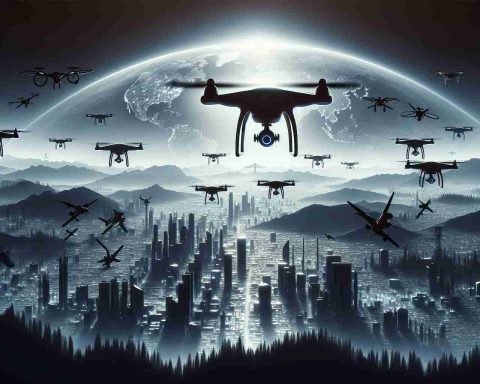Ongoing Challenges at the Estonia-Russia Border
Estonia continues to face significant challenges with smuggling operations across its border into Russia, despite implementing stricter customs measures. The ongoing conflict and various sanctions imposed on Russia have not deterred smugglers.
Eerik Purgel, an official from the Estonian Police and Border Guard Board in Narva, highlighted a worrying trend: illicit goods are still making their way into Russia at an alarming rate. Purgel pointed out that attempts to transport cash are particularly rampant, with large sums—amounting to tens of thousands of euros—discovered daily in travelers’ luggage.
Among the items being smuggled are various electronic devices, including advanced technologies such as satellite communication systems. This situation has prompted Estonian authorities to reinforce border checks, which they consider essential for curbing these illegal activities.
In response to the rising number of attempts to transport sanctioned items, Estonia has adopted a more rigorous screening process at border crossings like Narva, Koidula, and Luhamaa. Since these measures began in August, the volume of travelers crossing the borders has led to lengthy delays, as every piece of luggage is now scrutinized to prevent violations.
With increasing sanctions imposed by the EU against Russia—totaling 14 packages since the onset of the Ukraine conflict—officials remain vigilant to deter smuggling attempts as they prepare for further enforcement actions.
Border Security and Smuggling Dynamics: An In-Depth Analysis of Estonia’s Challenges with Russia
Overview of Smuggling Operations
Estonia’s border with Russia has become a hotspot for smuggling activities, with a notable increase in the illicit transport of goods and cash since the escalation of geopolitical tensions. Despite stringent customs enforcement measures, smuggling continues to thrive, primarily driven by the ongoing conflict in Ukraine and subsequent sanctions against Russia.
Current Smuggling Trends
Authorities, particularly the Estonian Police and Border Guard Board, have reported alarming trends in the types of illegal goods being smuggled across the border. Eerik Purgel, a prominent official, mentioned that significant amounts of cash—often reaching tens of thousands of euros—are found routinely in travelers’ luggage. Additionally, advanced electronic devices, including satellite communication systems, are frequently intercepted, indicating a shift towards high-value, strategic items.
Increased Border Security Measures
In reaction to the escalating smuggling activities, Estonia has reinforced its border security protocols. Implemented in August following the rise in illicit activities, these measures include:
– Enhanced Screening Protocols: Each piece of luggage is subjected to detailed inspection, leading to longer wait times at key border crossings such as Narva, Koidula, and Luhamaa.
– Deployment of Advanced Technology: Authorities are utilizing modern detection methods, including x-ray scanning and surveillance technology, to improve efficiency in identifying smuggled items.
These protocols have become essential, as the number of travelers crossing into and out of Estonia has surged, particularly amid increased EU sanctions against Russia.
Impact of EU Sanctions
The European Union has imposed extensive sanctions on Russia, comprising 14 comprehensive packages since the beginning of the Ukraine conflict. These sanctions, aimed at crippling Russia’s economy, have inadvertently fueled smuggling as individuals and groups attempt to bypass restrictions.
Pros and Cons of Increased Security Measures
# Pros:
– Deterrence: Heightened security may deter potential smugglers from attempting border crossings.
– Regulatory Compliance: Stricter checks help Estonia comply with international sanctions and regulations.
# Cons:
– Long Wait Times: Increased scrutiny leads to significant delays, frustrating legitimate travelers.
– Economic Impact: Lengthy border waits can adversely affect trade and tourism, with businesses suffering from reduced foot traffic.
Future Trends and Predictions
As geopolitical tensions continue to evolve, it is anticipated that smuggling activities may rise in sophistication. Innovations in smuggling methods could lead to more advanced techniques being developed to circumvent border checks. Additionally, ongoing adjustments to EU sanctions may further impact the dynamics of smuggling across the Estonia-Russia border.
Security Aspects and Sustainability
To enhance border security sustainably, Estonia may need to integrate more biometric technology and intelligence-sharing initiatives with other EU nations. This would not only improve operational efficiency but also help build a comprehensive framework for tackling smuggling in a manner that minimizes disruptions for lawful travelers.
Conclusion
The challenges of smuggling at the Estonia-Russia border highlight the complexities of enforcement in a geopolitically sensitive region. As authorities adapt to evolving smuggling tactics and tighten border controls, the need for a balanced approach that ensures security while facilitating legitimate travel and trade remains critical. For more information on Estonia’s border security and customs regulations, visit the Ministry of the Interior.



















